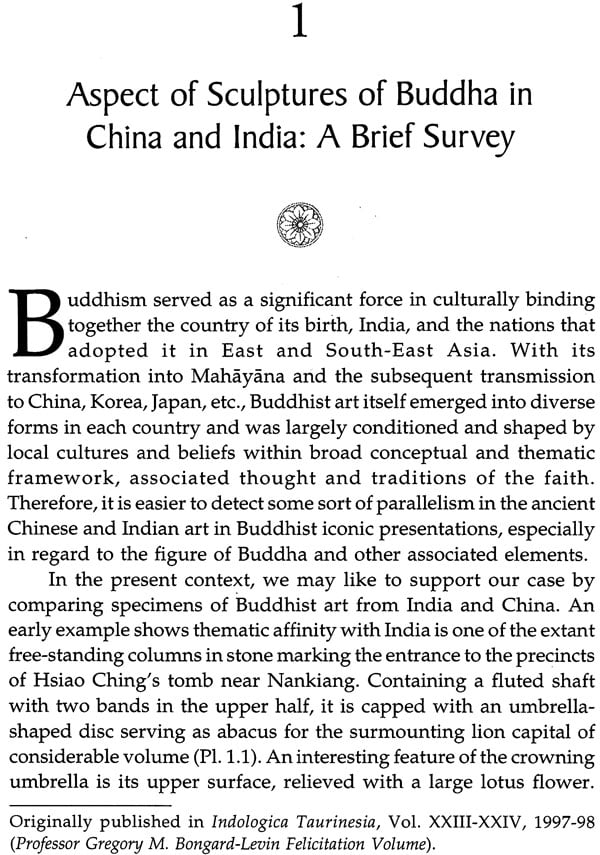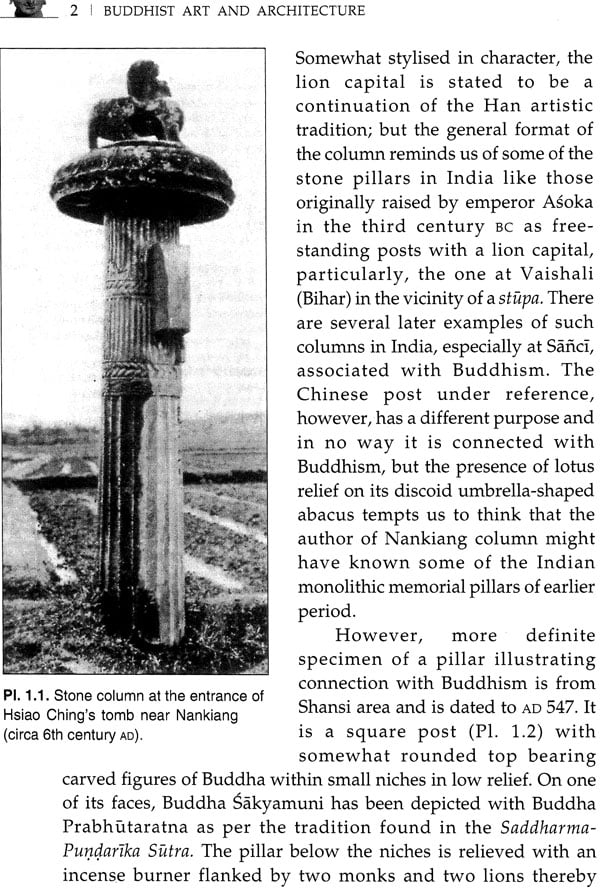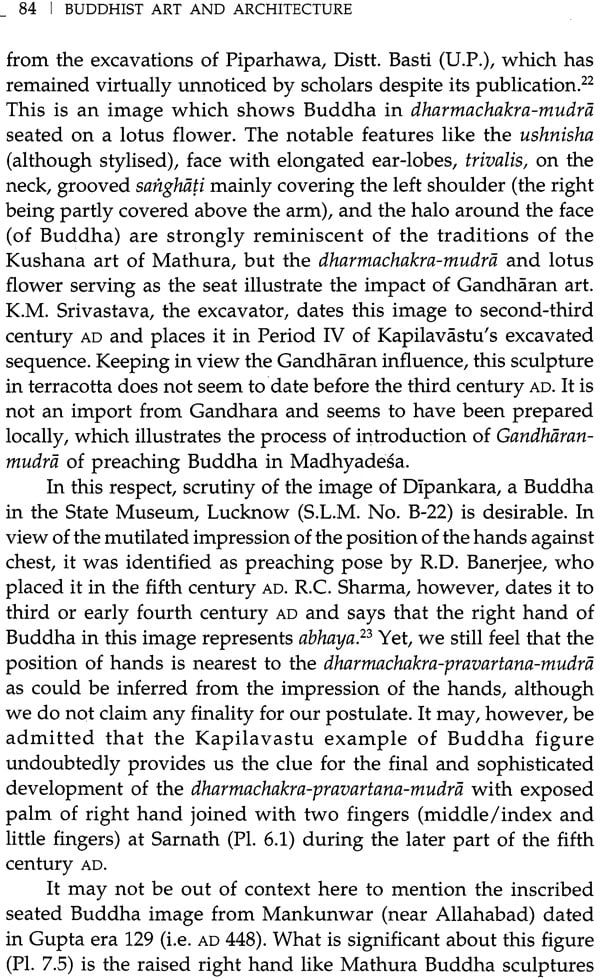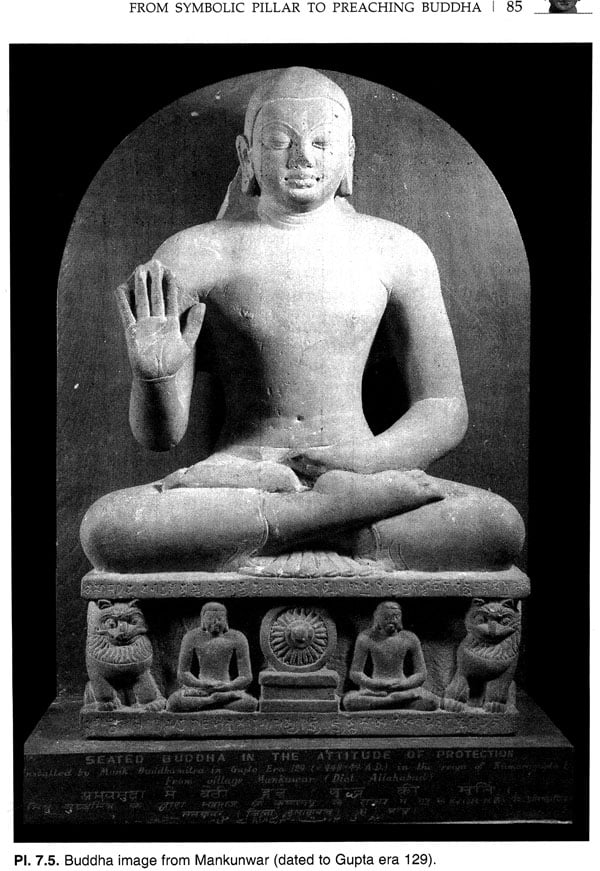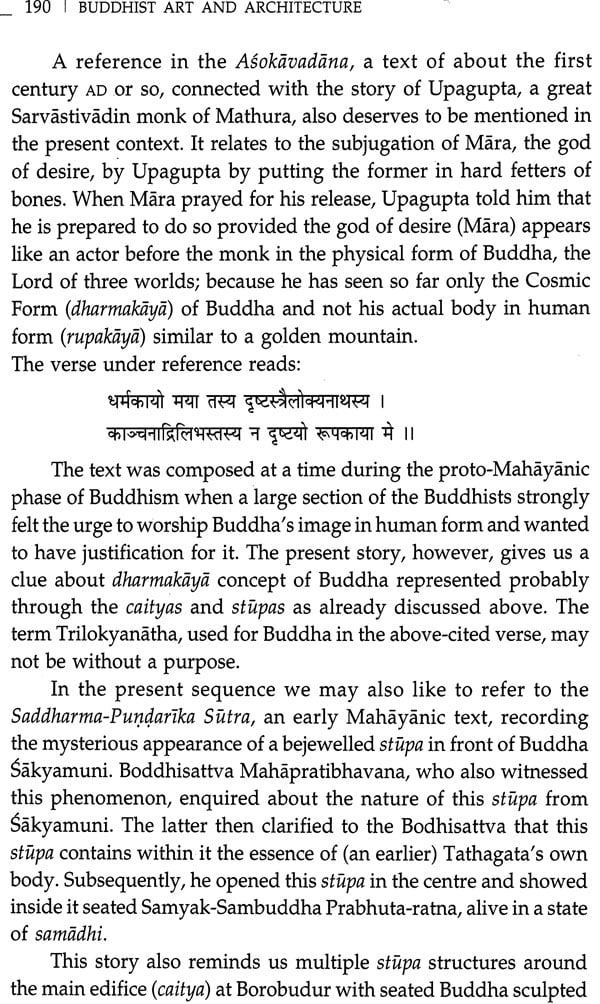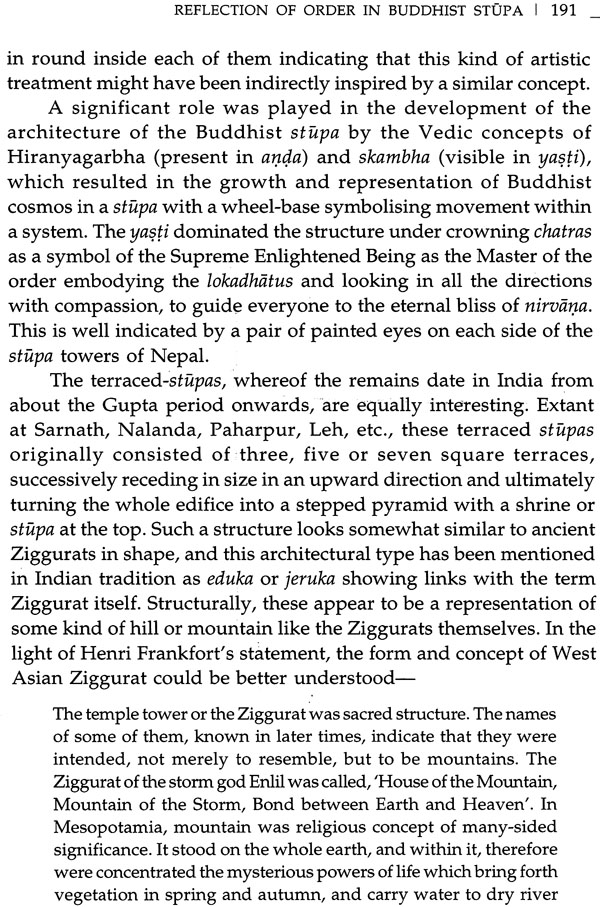
Buddhist Art and Architecture: Collected Papers of Shri M.C. Joshi
Book Specification
| Item Code: | NAO678 |
| Author: | B.R. Mani Achyutanand Jha & Amar Nath Khanna |
| Publisher: | Aryan Books International |
| Language: | English |
| Edition: | 2018 |
| ISBN: | 9788173055751 |
| Pages: | 220 (34 B/W Illustrations) |
| Cover: | Hardcover |
| Other Details | 10.0 inch X 7.0 inch |
| Weight | 580 gm |
Book Description
Late Shri Munish Chandra Joshi (1935-2007) devoted all his life to the study and research on art history, architecture, iconography, epigraphy, besides field archaeology. He left an indefatigable mark as an Indologist. Within the ambit of his scholarship was also included the study of Buddhist art and architecture, a subject close to his heart. His erudite scholarship and years of intensive research on the subject are reflected in the essays included in this volume. The essays cover a wide spectrum, from the iconic representations of the Buddha to the mudras in early sculptures; and from the symbolic pillar to the cosmic order in Buddhist stupa. No less interesting is the discussion on the spread of Buddhism in Central Asia and China.
The volume brings together for the first time 20 selected essays which Shri M.C. Joshi wrote over a period of nearly four decades, many of which are not easily accessible. They have been edited and updated with new material. Perceptive, insightful and thought-provoking, these essays present an entirely new approach to the study of Buddhist art and architecture. This well illustrated book will be valuable to the scholars as well as students of Buddhist art and will also appeal to general readers Dr. B.R. Mani, Director General, National Museum, is a renowned field archaeologist, numismatist and art critic. He is the former Additional Director General, Archaeological Survey of India (ASI). He has directed more than 14 excavation projects in the country, some of which are Lal Kot (Delhi), Salimgarh (Delhi), Muhammad Nagar and Harnol (Haryana), Siswania, Sankisa, Ayodhya, Lathiya (UP) and Kanispur and Ambaran (J&K). He has four books and 180 research papers to his credit.
Dr. Achyutanand Jha retired from the Archaeological Survey of India in the year 2013 after distinguished service of more than three decades in various capacities. He was associated with numerous excavations including the ones at Ayodhya, Sringaverapura and Saravasti (all in U.P.), Udayagiri (Odisha), Suryapahar (Assam), Sangho] (Punjab) etc. He has authored books on Buddhist Iconography and contributed numerous articles in research journals and volumes.
(Late) Shri Amar Nath Khanna retired as Senior Technical Officer, Indira Gandhi National Centre for the Arts, New Delhi, in 1996. Earlier he worked as a Senior Officer with the President of India. His published works include Archaeology of India (1981), Pilgrim Shrines of India (2003), Hindu and Buddhist Monuments and Remains in South-East Asia (2008) and The Diverse World ofIndian Painting (edited, 2009).
Late Shri Munish Chandra Joshi (1935-2007) devoted all his life to the study and research on art history, architecture, iconography, epigraphy, besides field archaeology. He left an indefatigable mark as an Indologist. He possessed simultaneous authority over diverse disciplines and was very quick in comprehension, apprehension and objective analysis of the subject which he took up for study.
It is generally considered that Joshi ji was of forgetful nature, yet he remembered every detail in case of academic matters. Throughout his life he remained over-burdened with work and never took rest. He had a passion to read and probably being a perfectionist, he could write less than what was expected from him in view of the vast knowledge he possessed. From his writings, particularly from the research papers and articles which he contributed in national and international journals, it becomes apparent that he had his own way of thinking and understanding the intricacies of various disciplines of the subject over which he had full command.
Joshi ji's scattered articles in various journals were listed by Shri A.N. Khanna in his commemoration volume Expression in Indian Art which I along with Dr Alok Tripathi edited in 2008. In due course it was decided to bring out a volume of his investigative research papers on history, art, iconography and archaeology of Buddhism and the result is before you.
I had the opportunity to work with him very closely during 1987-1993 when I could get solutions of a number of archaeological problems from him in course of discussions. He also introduced me to several eminent international scholars and would very kindly include me in the academic discussions. He used to discuss a lot which is reflected in his multipronged academic papers covering all important facets of Indian archaeology and culture. He also mastered tantra and jyotisha which gets echoed in his writings.
The present volume brings together for the first time 20 selected essays which Joshi ji wrote over a period of nearly four decades, many of which are not easily accessible. They have been edited and updated with new material. Perceptive, insightful and thought-provoking, these essays present an entirely new approach to the study of Buddhist art and architecture. This well-illustrated book will be valuable to the scholars as well as students of Buddhist art and will also appeal to general readers.
| Preface | v | |
| List of Illustrations | ix | |
| 1 | Aspect of Sculptures of Buddha in China and India: A Brief Survey | 1 |
| 2 | Aspects of the Iconic Representation of Buddha | 14 |
| 3 | Saddharmapundarika-Sutra in the Art of Ajanta | 22 |
| 4 | Mudras in Early Sculpture of Buddha | 31 |
| 5 | Some Aspects of Xuanzing's Description of Buddhist Sites of Deccan (India) with Special Reference to Ajanta Caves | 41 |
| 6 | Early Representations of Buddha and the Buddhist Traditions in Asokavadana | 54 |
| 7 | From Symbolic Pillar to Preaching Buddha A Survey of Early Buddhist Art | 67 |
| 8 | Reflection of Cosmic Order in Buddhist Stupa | 91 |
| 9 | Magic and Magical Practices in Early Mahayana Buddhism | 105 |
| 10 | Dharmachakra Pravartana Mudra in Gandhara Art | 119 |
| 11 | Aspects of Parampara in Early Stages of Buddhism | 126 |
| 12 | Minor Sculptures Showing Scenes from the Life of the Bddha at the Caves of Ajanta | 132 |
| 13 | On the Occurrence of the Term Pitamaha in a Nalanda Eipgraph as a Synonym of Buddha | 140 |
| 14 | Planning and Structural Aesthetics in the Cave-Art of Ajanta | 146 |
| 15 | Sarnath Hoard of Ritual Objects | 149 |
| 16 | The Stupa and its Origin | 157 |
| 17 | Buddhist Rock-cut Architecture: A Survey | 165 |
| 18 | Reflaction of Order in Buddhist Stupa | 184 |
| 19 | Mahayanic Concepts and Traditions in Saddharma Pundarika Sutra | 194 |
| 20 | The Latest Architectural Phase at Ajanta: Art and Iconography | 196 |
| Index | 199 |
